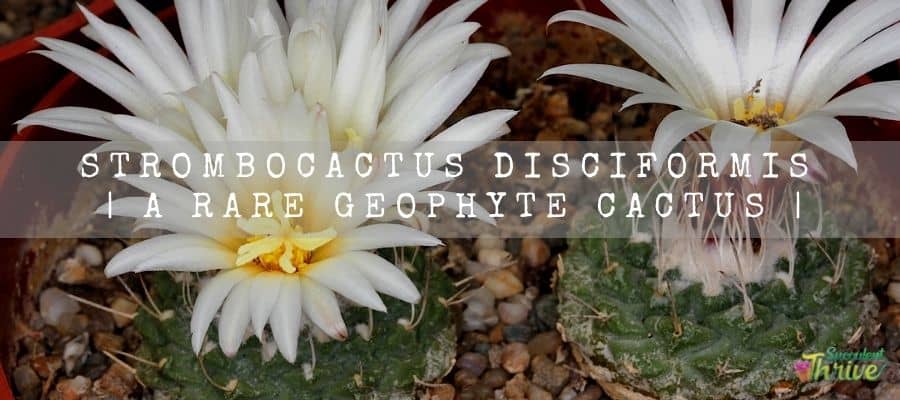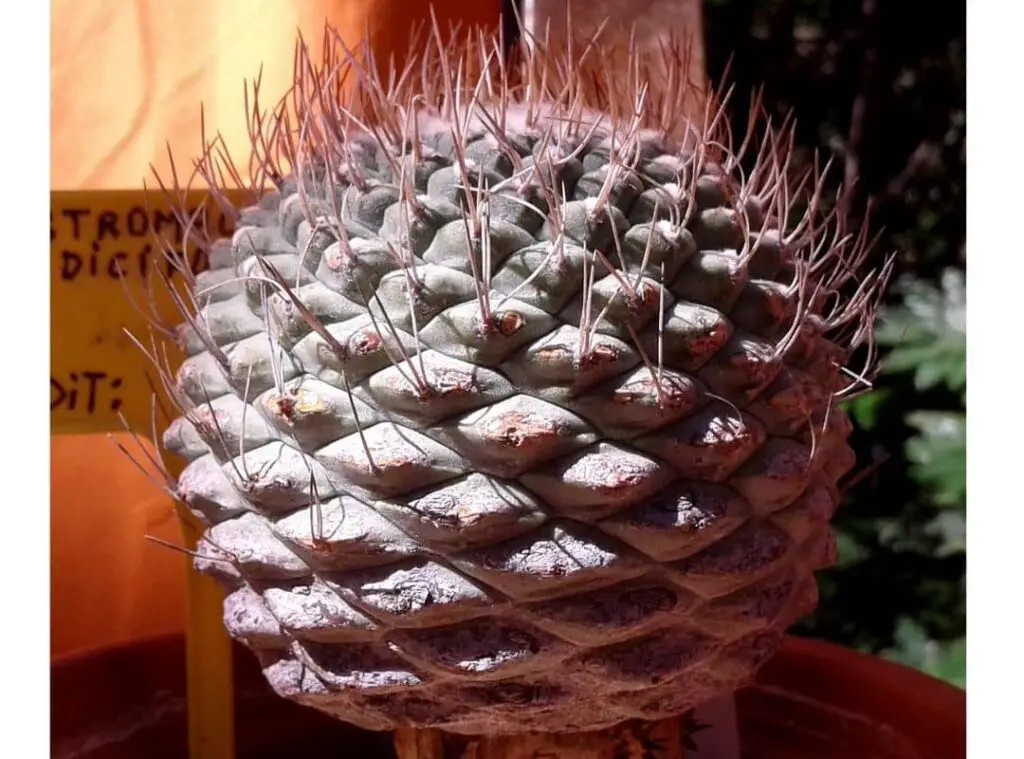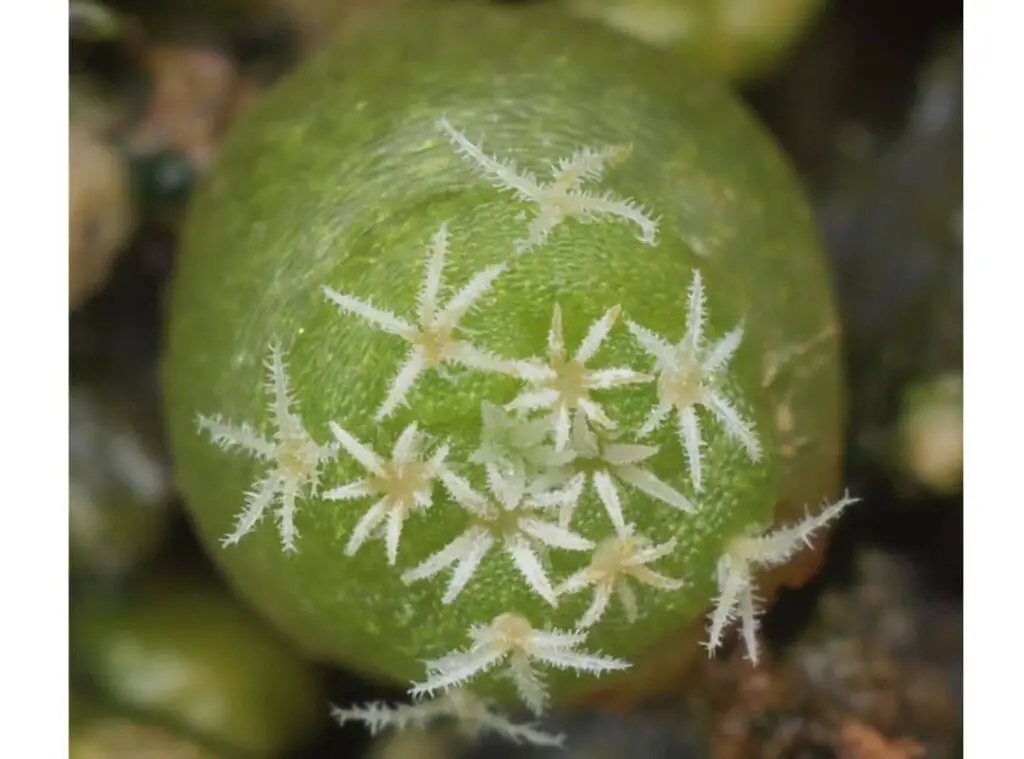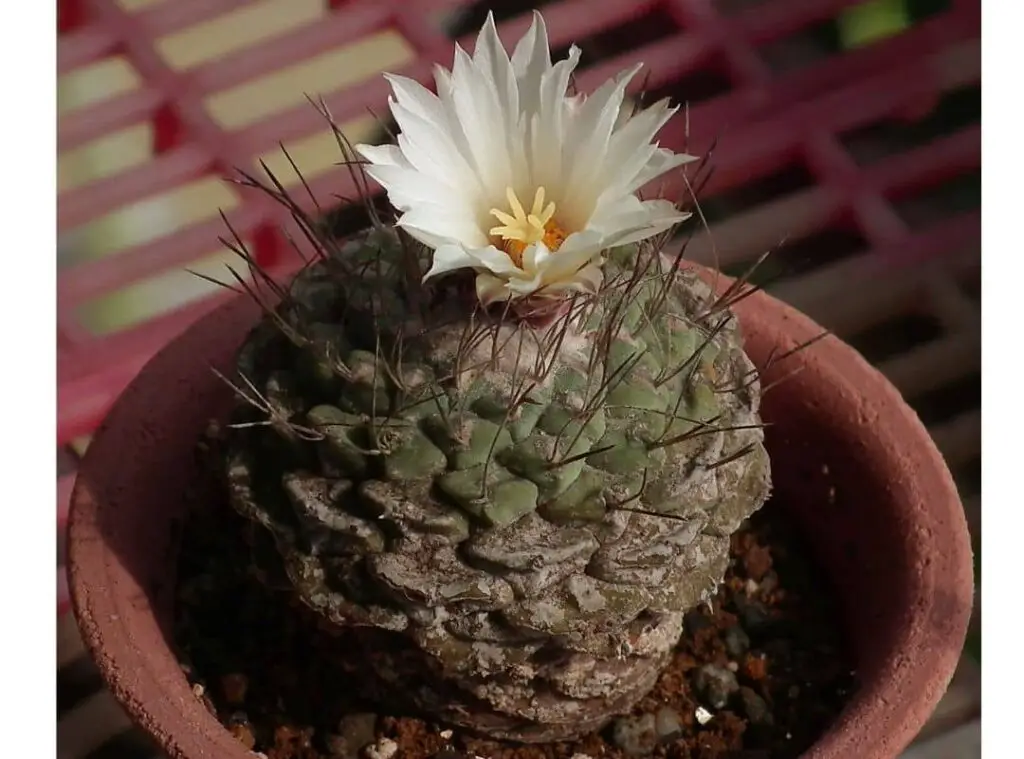You will find growing the Strombocactus disciformis plants so fulfilling and joyful. Once they grow to their best potential it would be so pleasing to watch them. They do not require a major care from you and due to this factor, freshers in gardening can also start growing them.

To briefly touch on the origin of the plants, they are native plants to Central Mexico. Further, Illegal collection for their ornamental value has led to a decline of these plants. Therefore IUCN marked them as a vulnerable plant. They would usually grow in steep limestone cliffs slopes.
So, if you are excited to learn about these plants, you are only a few steps away from learning all the basic information you would want to know when growing them.
This article would help you to learn the basic growing needs which you need to fulfill, the propagation methods as well as the bugs and issues they may come across.
How do I identify Strombocactus disciformis?
You could identify the Strombocactus disciformis plants simply by looking at its appearance. They would tend to grow as solitary plants.
First the stem of these plants would be either flattened or spherical. Furthermore, they would be about 3-8 cm in height too. Having said that, as they mature, the heights of the stems would be about 20cm. Further the stem would grow up to 3-9 cm across.
Strombocactus disciformis crown would be more like slightly depressed and felted too. You could spot them in blue-green color.
Furthermore, they would carry a gray tinge as well. In addition to that the base of the crown would come up brown corky spots as they mature too. Further they would comprise hard tubercles which would be arranged in a spiral manner. Those tubercles would be about 1-1.8 cm in height. Those tubercles would be flattened.
Furthermore, Strombocactus disciformis plants would consist of about 4-5 spines and they would form in an erecting manner.
Spines tips would be dark gray in color where the base would be pale gray in color. Those spines would be 1.2 – 2 cm in length. Those spines would tend to fall on the stem base once they get older. Strombocactus disciformis plants develop a root system which is strong, and they tend to look like turnips.
Besides these features, Strombocactus disciformis plants flower blossoming activity is also useful when identifying them. Those flowers would usually form on the crown. To further elaborate those blooms would be 3.5 cm in length. The flowers would be cream colored and tend to take a shiny look as well.
Furthermore , there could be occasional spots at the tips of the flowers. Flower blossoming would take place in spring and it would last in summer too.
It is noteworthy to mention that the flowers would stay alive for several days. Finally, Strombocactus disciformis plants produce some fruit which is about 7mm across, and they would split down its length as they mature. You could spot them carrying small seeds inside the fruits as well.

Growth rate
Strombocactus disciformis grows at a very slow pace.
One look care guide
| Botanical Name | Strombocactus disciformis |
| Plant Type | Cactus |
| Mature Size | 20 cm in height |
| Sun Exposure | Full sunlight |
| Soil Type | Well-draining |
| Soil pH | 6.1 to 6.5 (mildly acidic) 6.6 to 7.5 (neutral) 7.6 to 7.8 (mildly alkaline) |
| Bloom Time | Spring / Summer |
| Flower Color | Cream color |
| Hardiness Zones | USDA hardiness zones 10b to 11b from 35 °F (+1.7 °C) to 50 °F (+10 °C) |
| Native Area | Mexico |
| Toxicity | No proven records |
| Average price | 9 USD |
How do you take care of Strombocactus disciformis?
Light Requirement
It is vital that you provide sufficient sunlight when taking care of the plants well. Ideally, full sunlight would be ideal for their flourish.
It is quite evident that they require full sunlight to grow as they are used to grow in hot and arid areas such as steep limestone cliffs slopes etc. These are not the type of plants which would tolerate low lighting.
Thus, ample sunlight is a quite important factor when providing the right growing conditions for them. If you are hesitant whether the lighting at your indoor space is sufficient, I recommend supplying the extra light by placing grow lights closer to the plants.
Temperature and humidity
Warmer temperatures would suit the Strombocactus disciformis plants the best. With that being said, Strombocactus disciformis plants cannot handle temperatures which drop more than – 4 degrees Celsius.
In fact, Strombocactus disciformis plants have a frost tolerance up to -4 degrees Celsius for a shorter period. Prolonged exposure for much colder conditions would bring adverse effects on the plants.
Is it cold hardy?
Strombocactus disciformis can tolerate temperatures up to 4 degrees Celsius but only for shorter periods.
Growth Zone
The conditions in USDA hardiness zones 10b to 11b: from 35 °F (+1.7 °C) to 50 °F (+10 °C) would perfectly fit in for these plants.
Watering Requirement
The most crucial aspect in terms of caring for plants is watering them properly. In simple words, you need to water sparingly in spring and in summer.
However, you need to still check whether the soil is dry from the previous watering sessions and then apply water.
I suggest skipping watering the plants from mid-autumn to winter. Keep in mind that you should never expose the plants for waterlogged soggy conditions as it would only bring adverse repercussions on the plants. Ideally a thorough yet infrequent watering would suit these plants the best.

Soil Requirement Type / pH.
Selecting a right soil mix is very important as it will have a greater impact in assuring a healthy growth of the plants.
Ideally you need to look out for a soil mix which has excellent drainage so that it would ensure there is no excess water retained in the potting medium.
On the other hand, if you use a soil mix which has poor drainage, it would make the soil mix waterlogged , damp, and soggy which the Strombocactus disciformis hate to be in.
In addition to the good drainage, it is important that it has a good aeration as well. When considering all these factors, I suppose best would be to use a soil mix which has organic material such as peat and humus included in it.
Pot size Potting and Repotting
Strombocactus disciformis would perform well in any type of container planter as long as they have a high porosity.
Once you grow them in porous pots, it would ensure the excess water evaporates rapidly. So, considering this, terracotta or clay pots would be ideal for this purpose.
On the other hand, when it comes to repotting, you could do that if the requirement arises only. Literally these are slow growing sets of plants, and you may have to repot them less often.
However , I encourage repotting the plants ideally in the warmer season and only if their soil is dry too. You may repot them once every four years. First what you have to do is to gently remove the plants from the pots.
Ensure that you don’t damage the roots of the plants. Once you take the plants out, you need to remove the older soil around the plants and check whether there are any decaying roots on the plants.
If you find any, you can snip them off and treat the cuttings with a fungicide. Finally, you may grow them in a fresh soil mix filled pot. Lastly you can leave the plants for about one weeks’ time and then water them lightly.
Repotting the plants would allow the plants to grow in fresh growing conditions. If you keep growing the plants in the same old soil mix for extended periods, chances are that it would deteriorate the health of the plants.
Where to Plant
Strombocactus disciformis would survive in any spot as long as they get sample sunlight. In addition to that , they can fit into cute little ornamental planters as well. However, you need to bear in mind to provide a planter where there is a growing medium which is fast draining too.
Fertilizer and time of year
Fertilizing the Strombocactus disciformis in early spring would be beneficial to boost the growth of the plants.
Furthermore, you may proceed with a mineral fertilizer to do the task. In addition to that, you need to make sure that you do not overfeed these plants as it would result in feed burns of the plants. Moreover, suspend feeding them in winter as they would be more like in relaxing mode during winter.
Flower
Strombocactus disciformis plants emerge with blooms in cream color. Furthermore, they would start to flower in spring and continue to bloom in summer as well. The flowers’ survival would be limited for several days.

Dormancy
Strombocactus disciformis are winter dormant plants just like many other succulents and cacti.
Toxicity
There are no proven records of the toxicity of the Strombocactus disciformis plants.
Common bugs and illnesses
Root rot could be one of the most commonly spotted diseases which these plants may experience and excess watering is the key factor which would contribute to this condition.
Simply, the prolonged exposure for waterlogged conditions would create over watering in the pots and eventually it would pave the way for rot. Root rot is a condition which could turn out to be fatal as if it spreads on a massive level , you will not be able to save the plants irrespective of what you do.
In addition to root rot, Strombocactus disciformis are somewhat vulnerable for pests attacks particularly from regular pests such as mealybugs, aphids and scales.
If you come across any condition like this, the first thing is to quarantine these plants and treat those with fungicides. If the pest attack has spread severely, you may consider transplanting them as well.
Special Care tips
In terms of special care tips, it is not necessary to do anything in particular as these are slow growers. Further pruning is also not essential here.
How to propagate Strombocactus disciformis
Best is to proceed with the seed’s propagation method with these plants. However, you need to first wait until the seedlings become at least 02 cm in size and then sow them in an appropriate growing medium.
Do not use them when they are too young, they would be much smaller in size, and it is very unlikely that you will succeed with that. Furthermore, you may also use the cuttings to propagate them as well.
Not only that but also, grafting the plants would also be a fine way of making new Strombocactus disciformis plants. It is a relatively easy way of propagating these plants when compared with the other methods.
Strombocactus disciformis benefits
Many people opt to use them in pots and keep them in terraces, patios. In addition to that they would make great indoor and greenhouse plants as well.
Final thought
So, now I have come to the conclusion of the article. I hope now you are all set and well prepared to start growing these amazingly beautiful plants.
Read Next : Peperomia Ferreyrae | It Looks Different |
